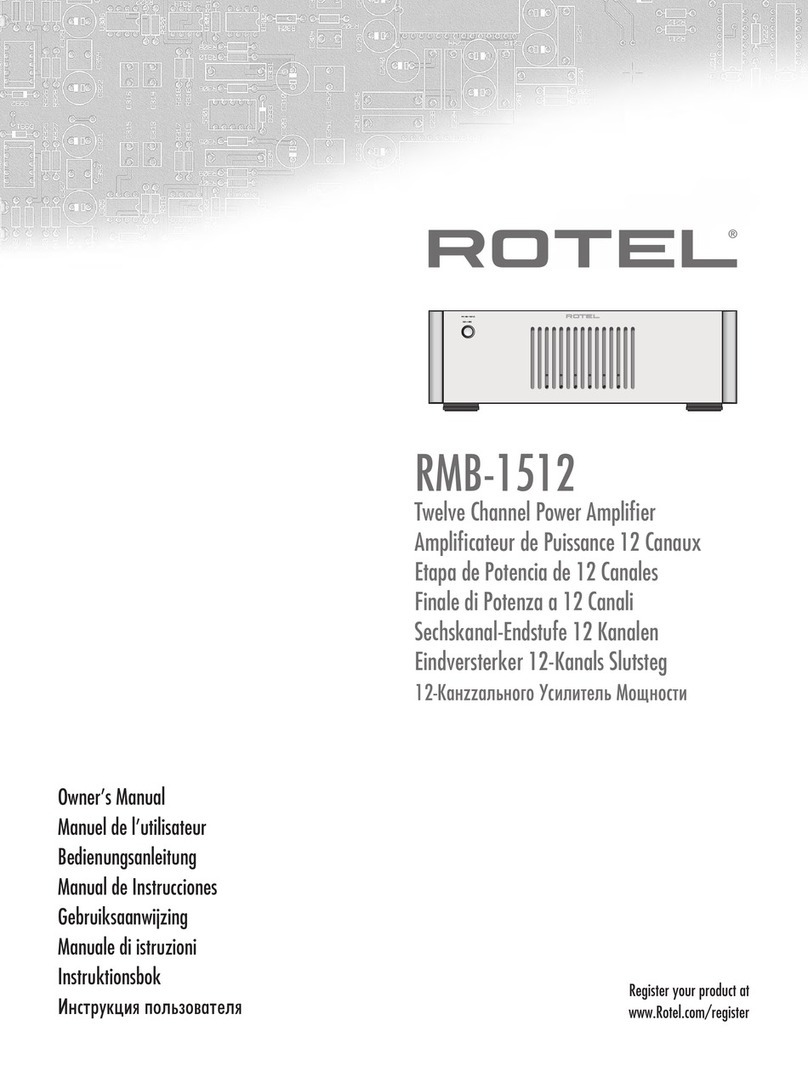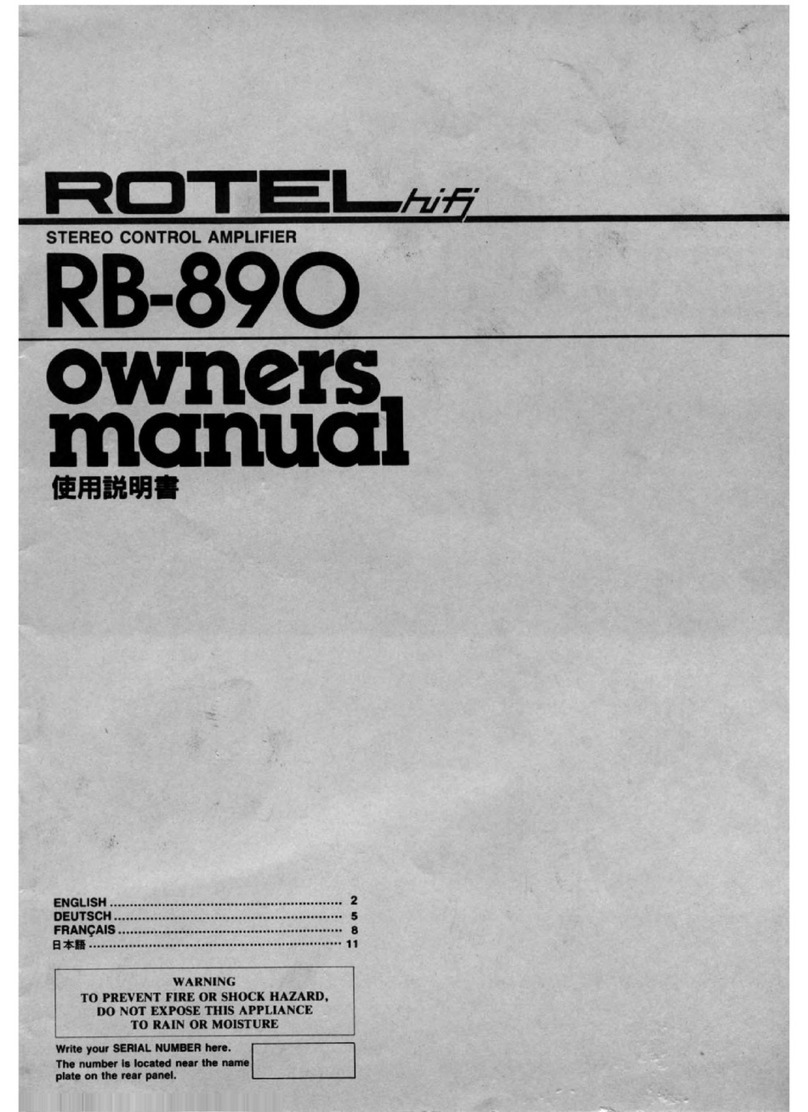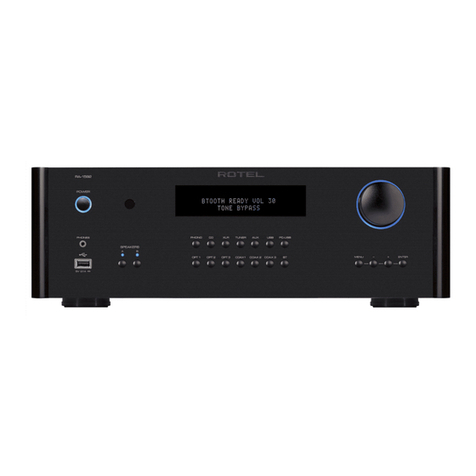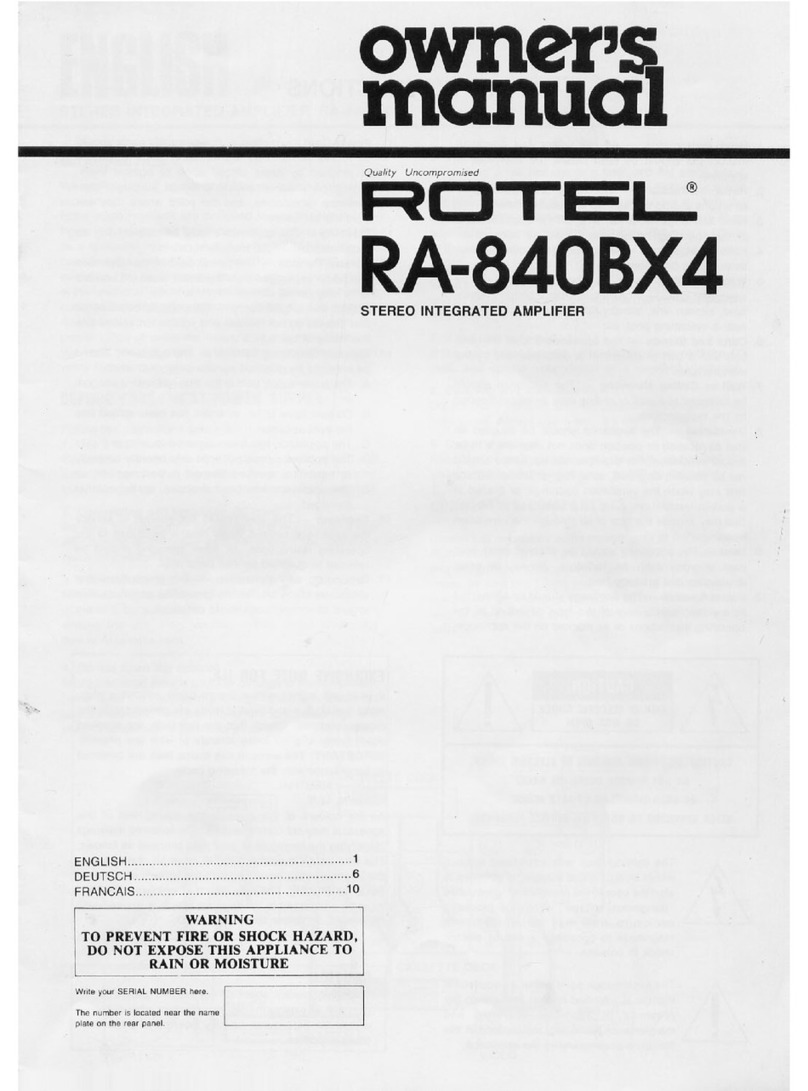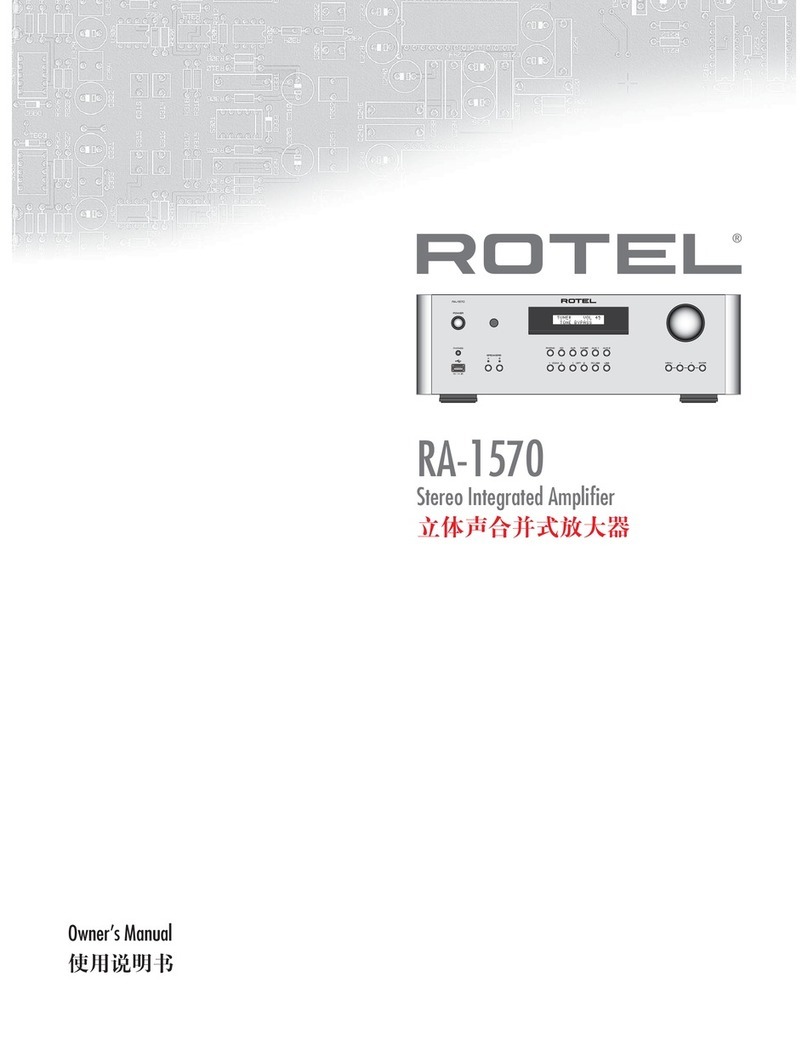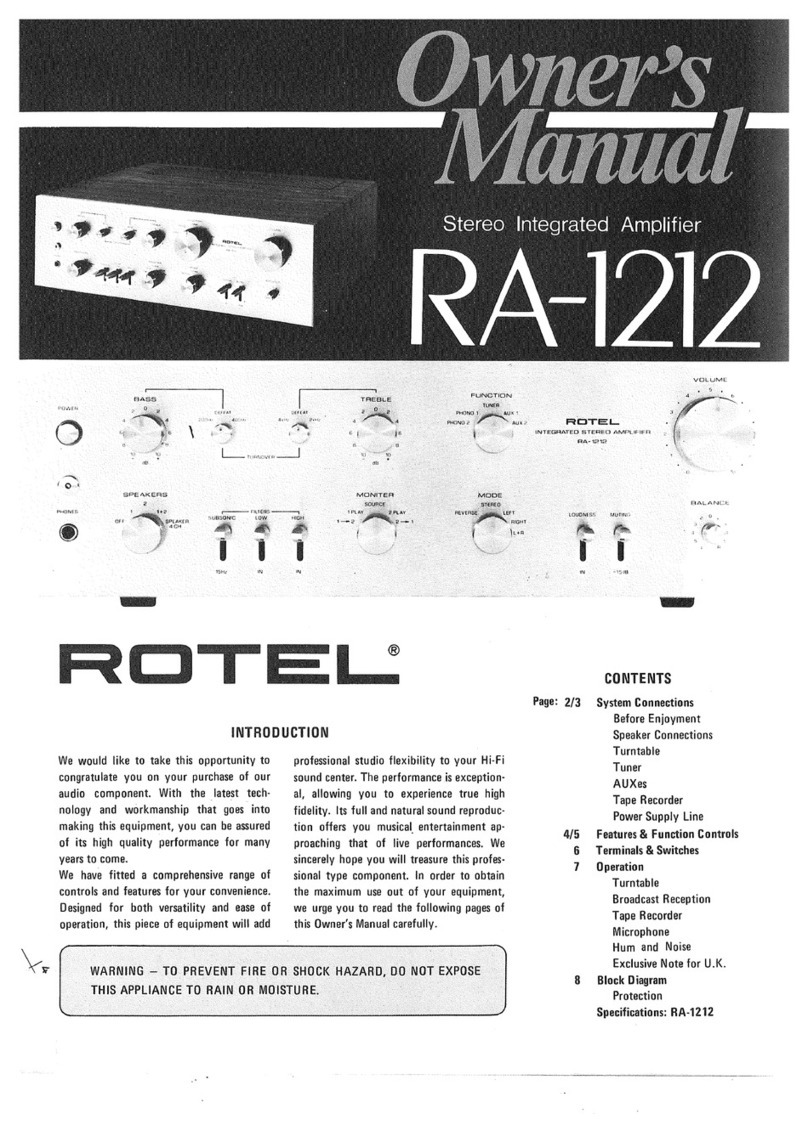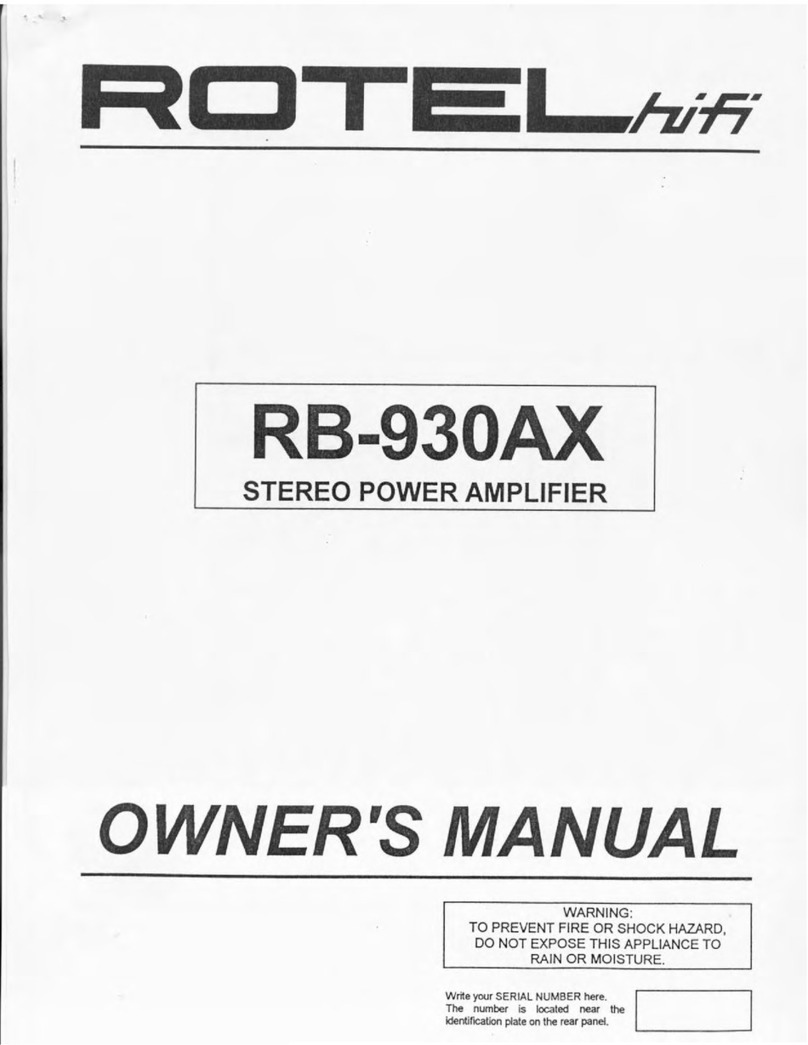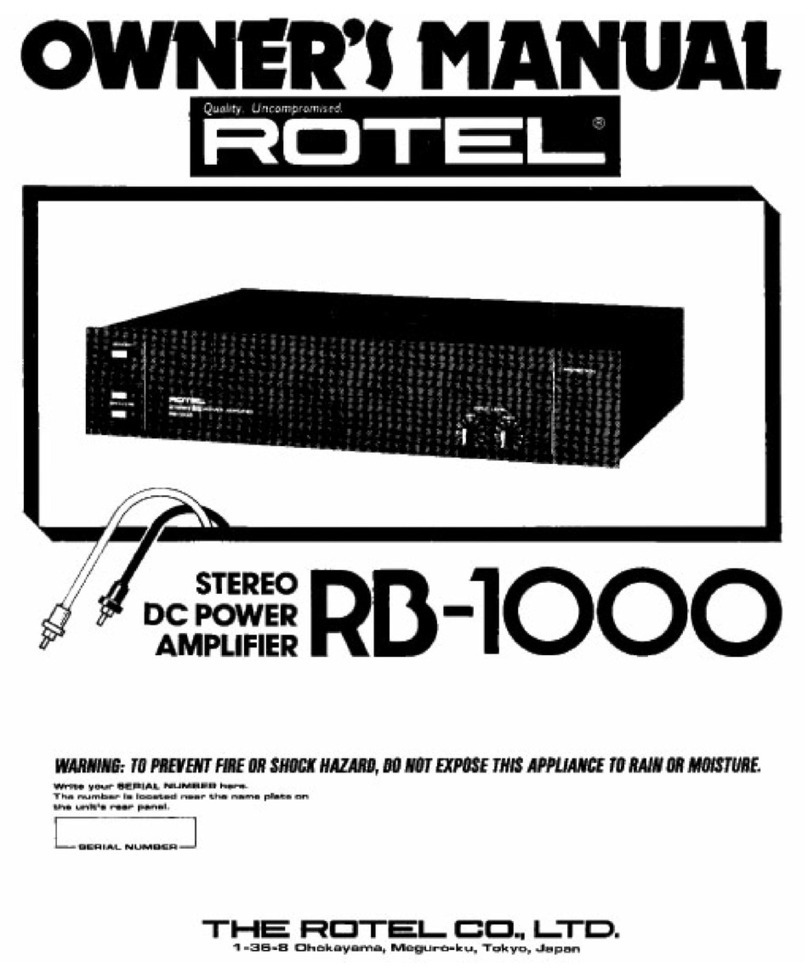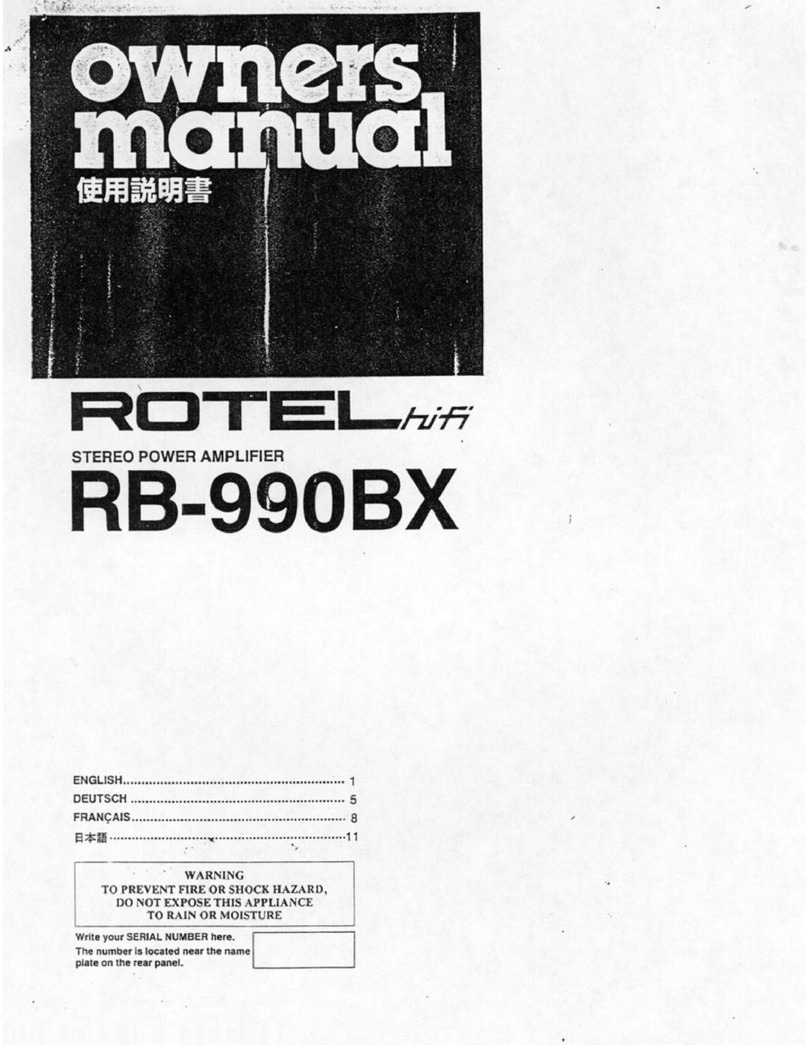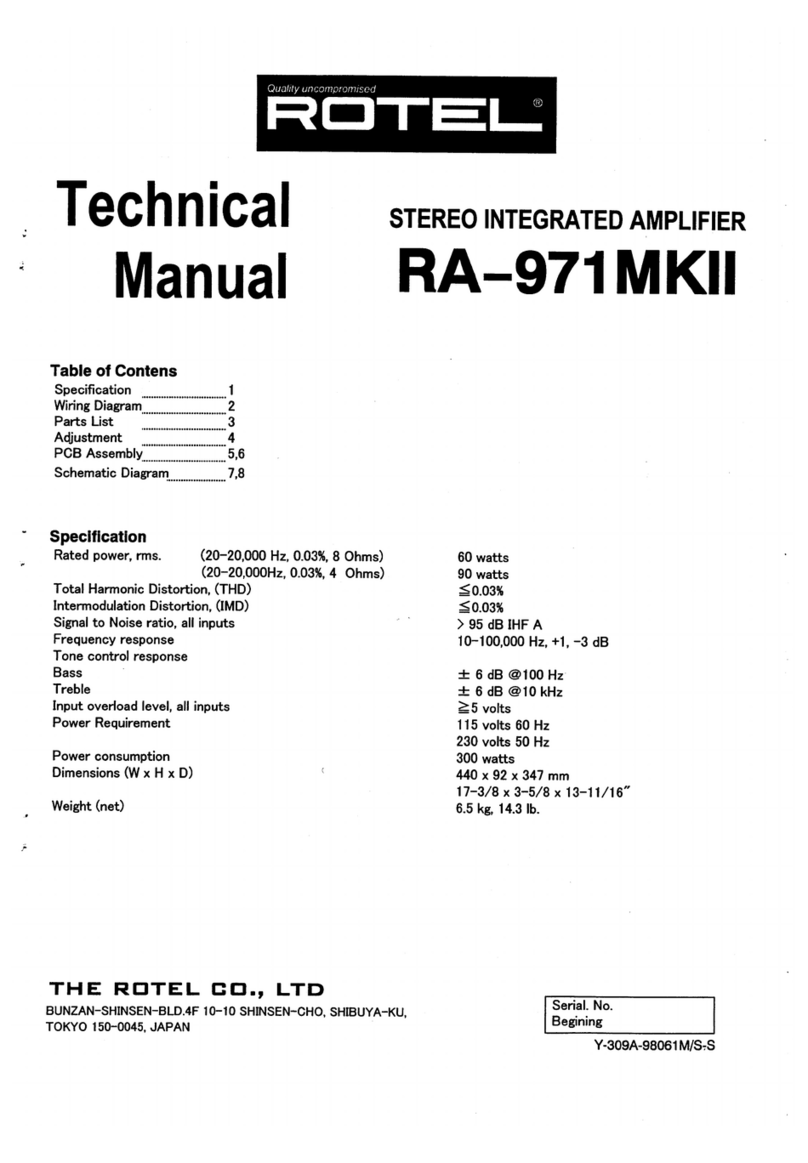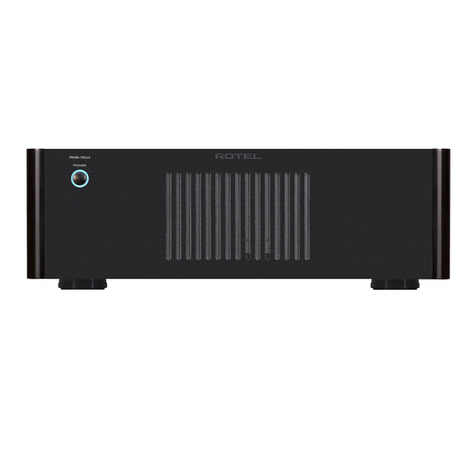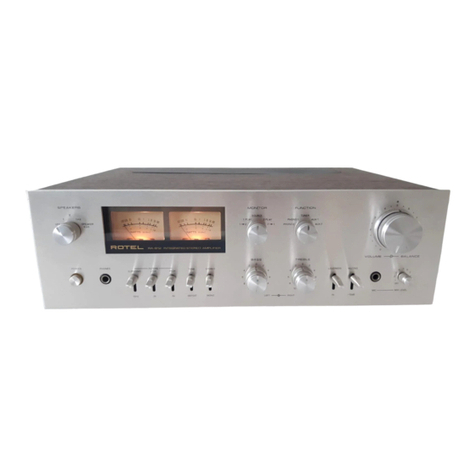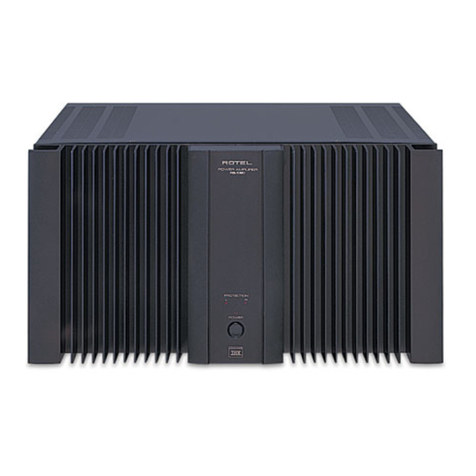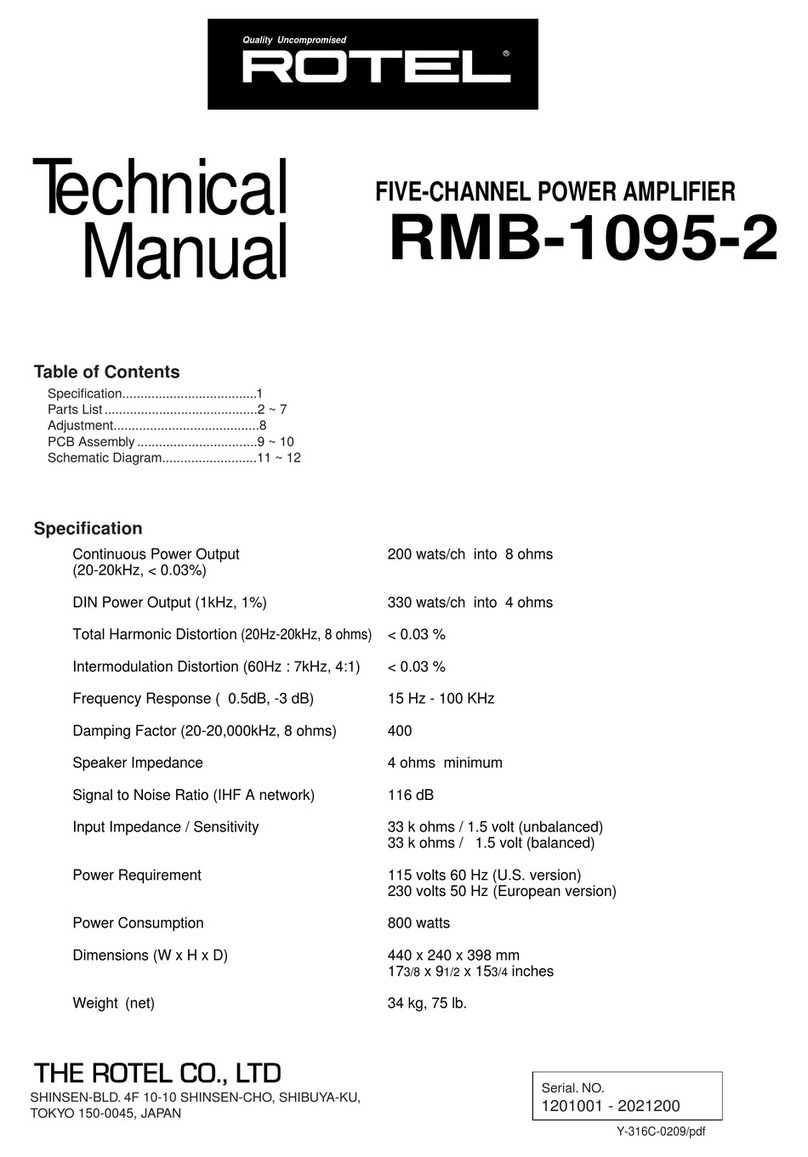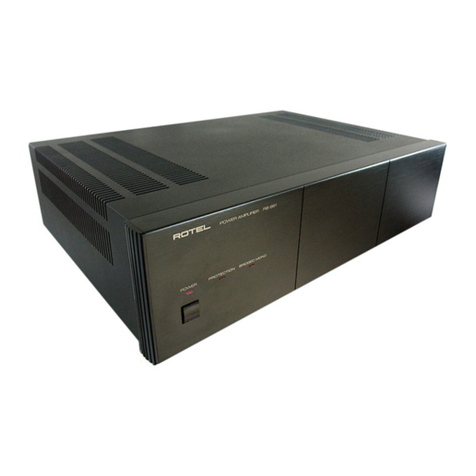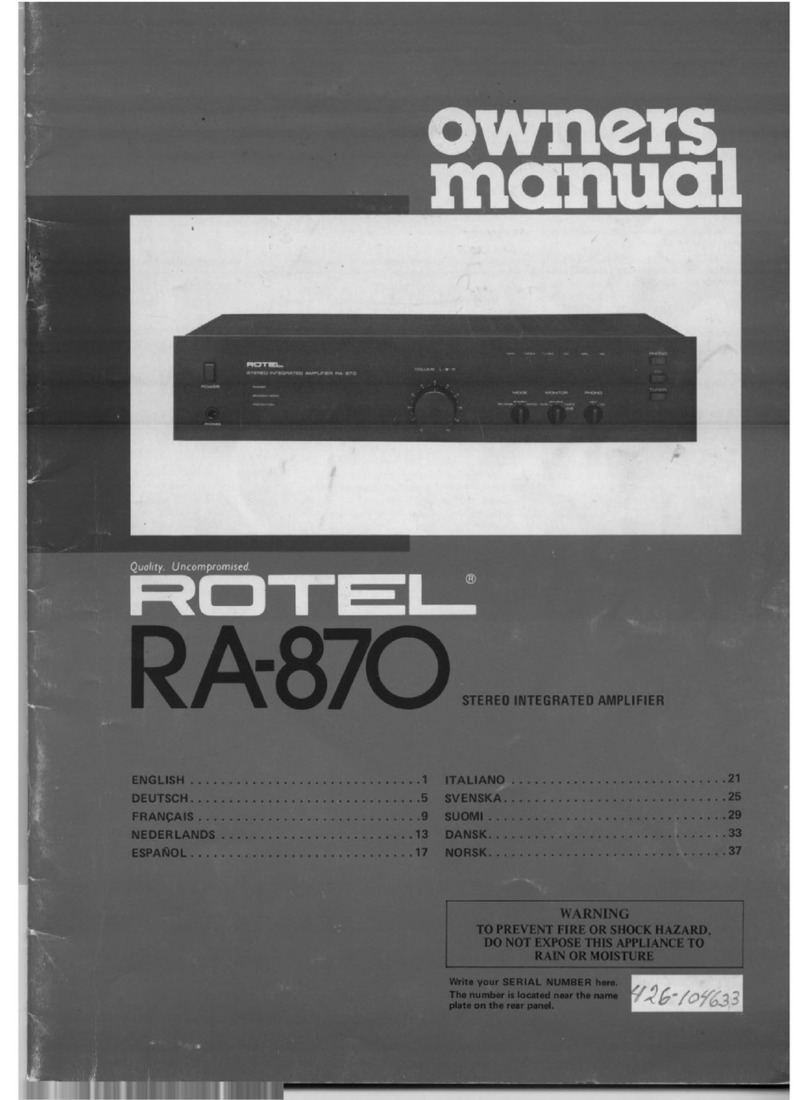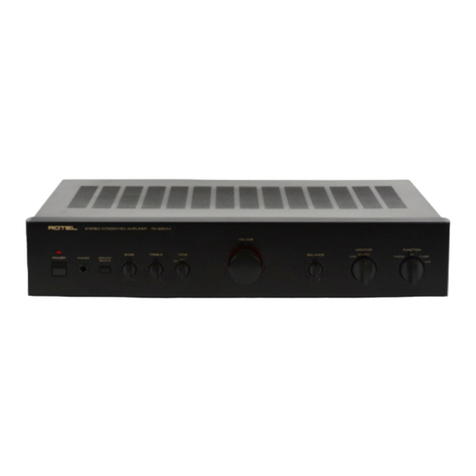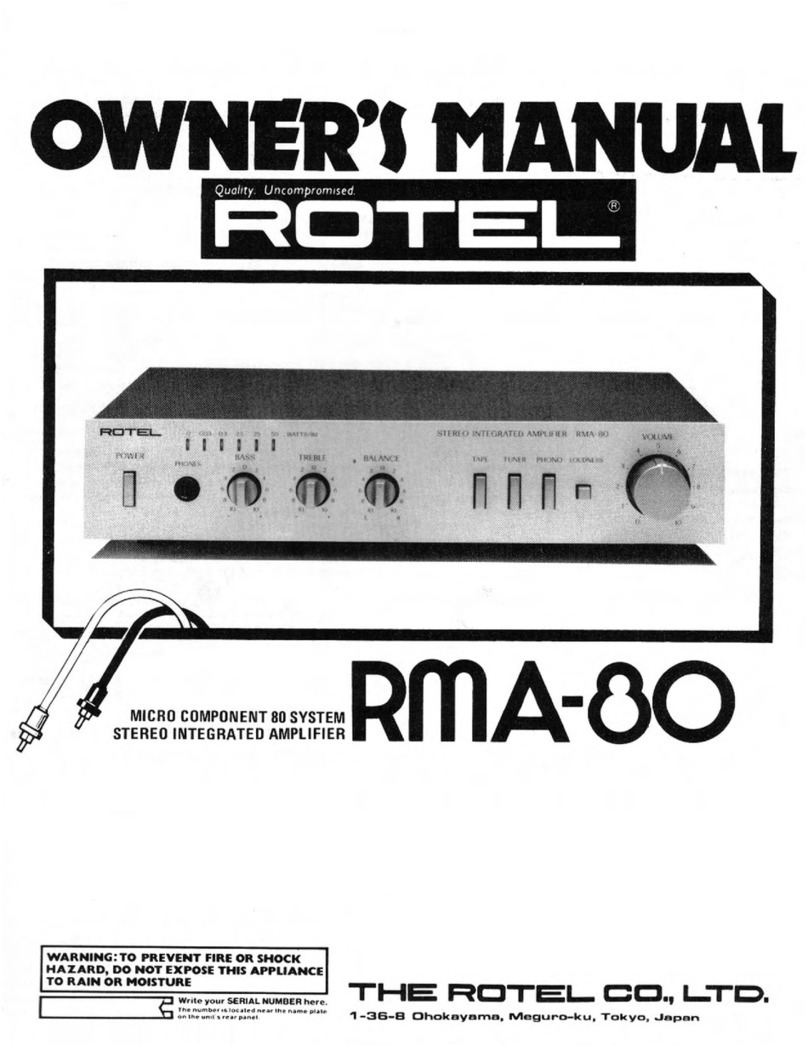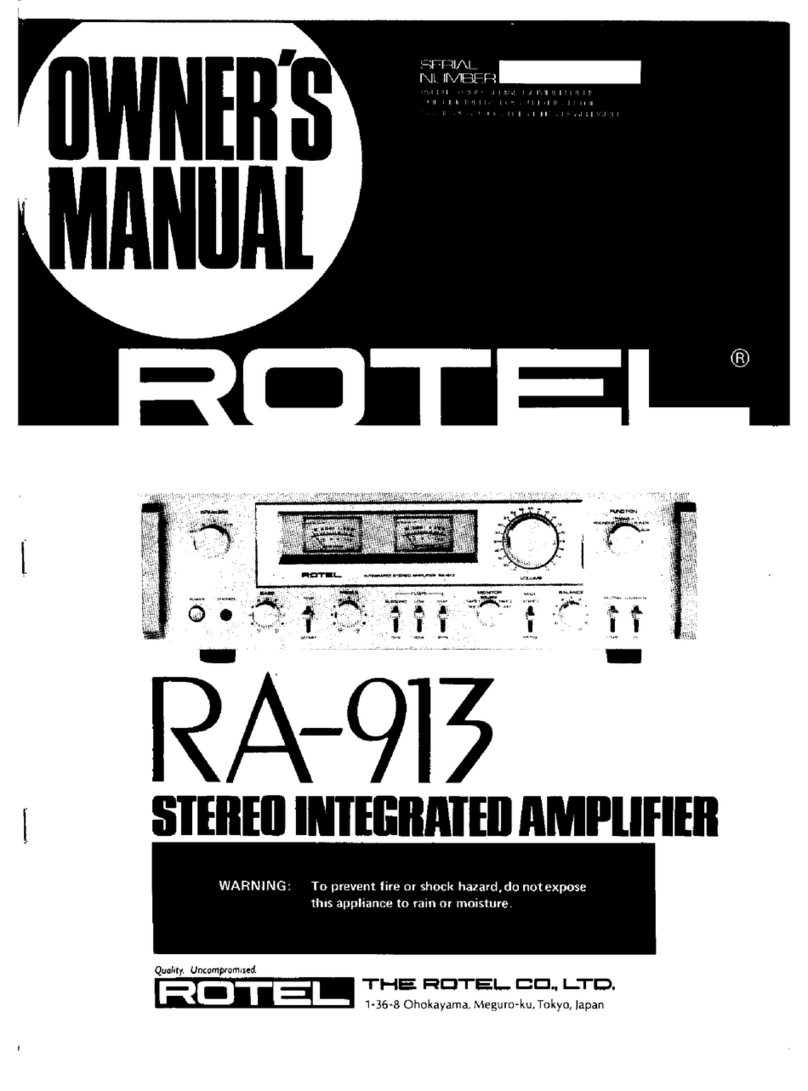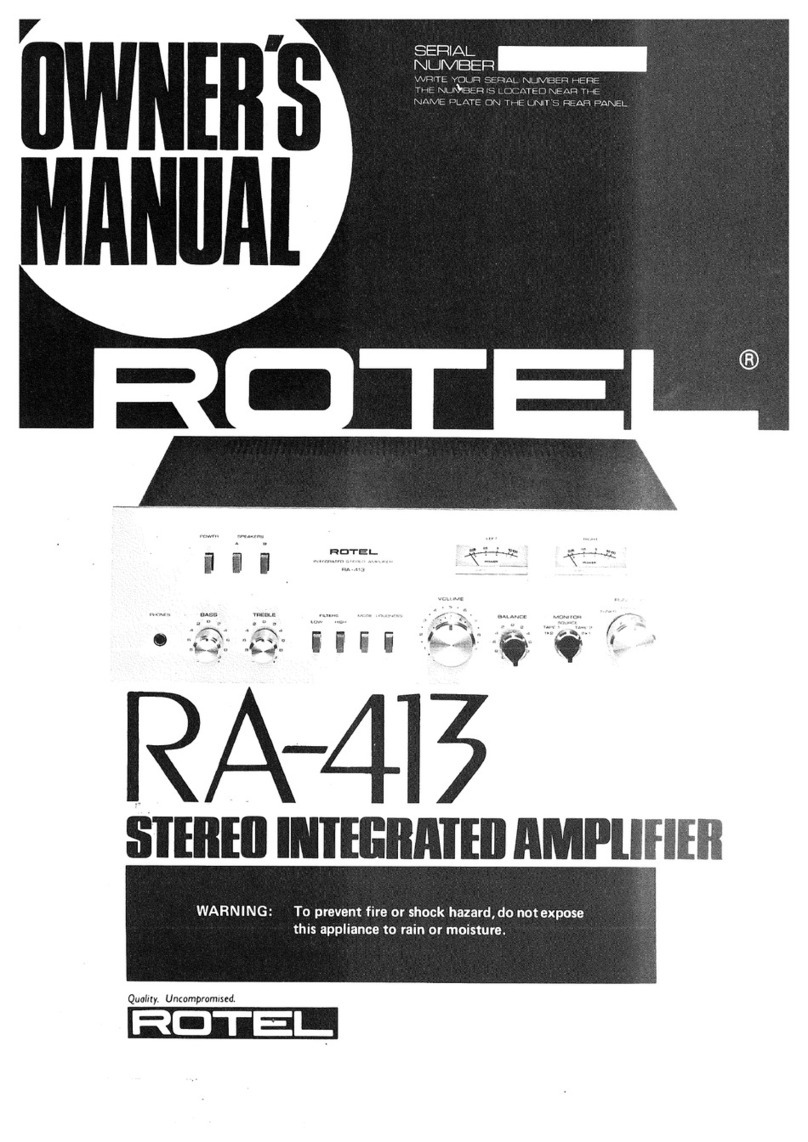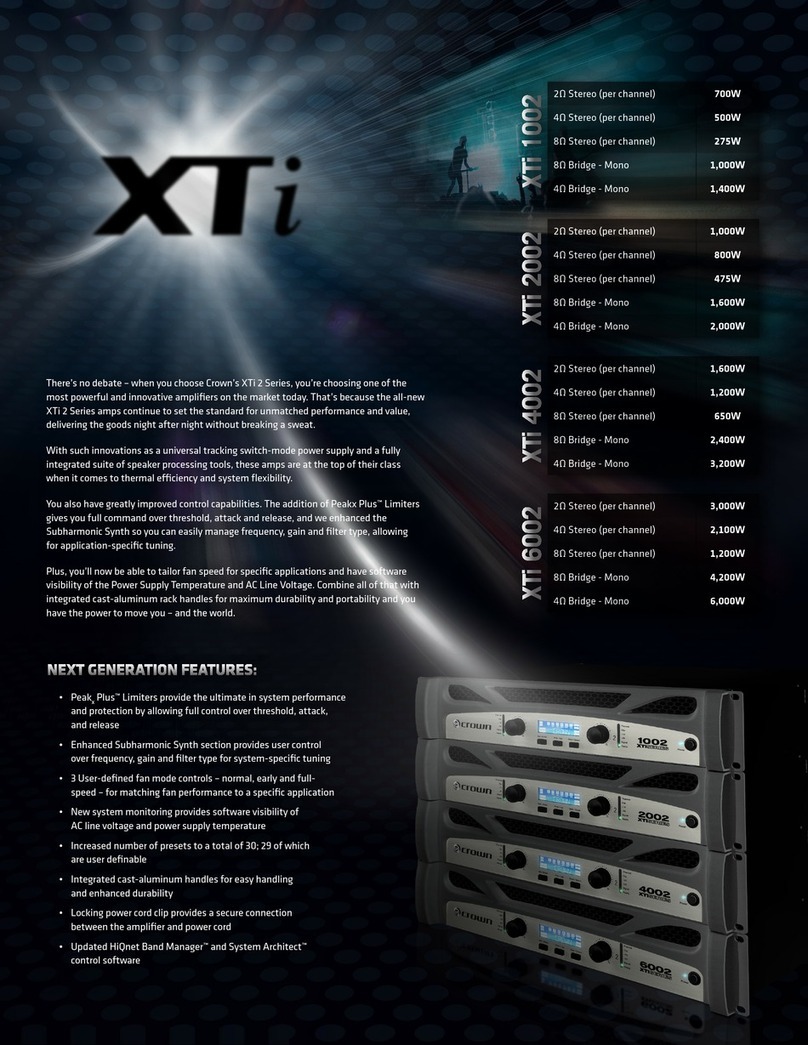
10
Au sujet de Rotel
C’est une famille de passionnés de musique
qui a fondé Rotel, il y a maintenant plus de
40 ans. Pendant toutes ces années, leur pas-
sion ne s’est jamais émoussée et tous les
membres de la famille se sont toujours battus
pour fabriquer des appareils présentant un
exceptionnel rapport musicalité-prix, suivis en
cela par tous les employés.
Les ingénieurs travaillent toujours en équipe
réduite, écoutant et peaufinant soigneusement
chaque appareil pour qu’il corresponde
parfaitement à leurs standards musicaux. Ils
sont libres de choisir n’importe quels
composants dans le monde entier, uniquement
en fonction de leur qualité. C’est ainsi que vous
trouvez dans les appareils Rotel des
condensateurs britanniques ou allemands, des
transistors japonais ou américains, tandis que
tous les transformateurs toriques sont
directement fabriqués dans une usine Rotel.
L’excellente réputation musicale des appareils
Rotel a été saluée par la plupart des maga-
zines spécialisés ; ils ont reçu d’innombrables
récompenses, et sont choisis par de nombreux
journalistes critiques du monde entier, parmi
les plus célèbres, ceux qui écoutent de la
musique quotidiennement. Leurs commentaires
restent immuables : Rotel propose toujours des
maillons à la fois musicaux, fiables et
abordables.
Mais plus que tout, Rotel vous remercie pour
l’achat de cet appareil, et souhaite qu’il vous
apporte de nombreuses heures de plaisir
musical.
Pour démarrer
Merci d’avoir acheté cet amplificateur stéréo
intégré Rotel RA-01. Il a été spécialement conçu
pour vous fournir des heures et des heures de
plaisir musical en tant que cœur d’une chaîne
haute-fidélité de très haute qualité.
Le RA-01 est un amplificateur intégré très
complet, de très hautes performances. Les
différents aspects de sa conception ont été
réalisés de manière à reproduire toute la
dynamique comme les plus subtiles nuances
de la musique. Le RA-01 est entre autres équipé
d’une alimentation entièrement régulée,
utilisant un transformateur torique spécialement
fabriqué pour Rotel et des condensateurs “ slit-
foil ” également uniques en leur genre. La faible
impédance de cette alimentation assure une
énorme réserve de puissance, capable de faire
face aux exigences les plus élevées. Cette
conception est évidemment plus coûteuse, mais
elle est essentielle pour le respect de la musique.
Les circuits imprimés possèdent des pistes
parfaitement symétriques. Elles préservent ainsi
parfaitement l’intégrité “ temporelle ” de la
musique. Les composants utilisés sont par
exemple des résistances à film métallique et
des condensateurs au polystyrène ou
polypropylène sur tous les points critiques du
trajet du signal. Les plus infimes détails ont
été analysés avec soin, afin que rien ne vienne
détruire l’exceptionnelle musicalité de cet
amplificateur.
De plus, le RA-01 possède des sélecteurs de
source en lecture et en enregistrement séparés,
ce qui vous permet d’écouter une source pen-
dant que vous en enregistrez une autre.
Les principales fonctions du RA-01 sont faciles
à comprendre et à utiliser. Elles ne diffèrent
en rien de celles d’une chaîne haute-fidélité
traditionnelle. Branchez simplement les sources
et écoutez !
Quelques précautions
ATTENTION : afin d’éviter tout dommage
à l’appareil, éteignez TOUS les maillons du
système avant de procéder au moindre
branchement d’un câble. Ne remettez pas
les appareils sous tension sans avoir vérifié
que tous les branchements ont été
correctement effectués. Vérifiez notamment
les câbles des enceintes acoustiques : il ne
doit pas y avoir de brins susceptibles de
créer des courts-circuits d’une prise à
l’autre, ou sur le boîtier de l’amplificateur.
Veuillez lire ce manuel d’utilisation très
soigneusement. Il vous donne toutes les infor-
mations nécessaires aux branchements et
fonctionnement du RA-01. Si vous vous posez
encore des questions, n’hésitez pas à contacter
immédiatement votre revendeur agréé Rotel.
Conservez soigneusement l’emballage du RA-01.
Il constitue le meilleur et le plus sûr moyen pour
le transport futur de votre nouvel appareil, afin
d’éviter tout dommage sérieux à celui-ci.
Remplissez et renvoyez la carte de garantie.
Conservez la facture de votre appareil : c’est
la meilleure preuve de votre propriété et de
la date réelle d’achat. Elle sera nécessaire pour
mettre éventuellement en jeu la garantie.
Disposition
Comme tous les appareils traitant des signaux
relativement faibles, le RA-01 est sensible à son
environnement immédiat. Évitez de le placer
sur d’autres maillons. Éloignez les câbles de
modulation sonore des câbles d’alimentation
secteur. Vous éviterez ainsi l’apparition
éventuelle de ronflements parasites.
Le RA-01 dégage un peu de chaleur pendant
son fonctionnement, ce qui est normal. Ne posez
donc pas d’autres maillons (ou objets) sur lui.
Ne bloquez pas ses ouïes supérieures de
refroidissement. Il doit y avoir environ 10 cm
de dégagement au-dessus de lui pour permettre
le bon fonctionnement de sa ventilation.
N’oubliez pas non plus, lors de son installa-
tion, qu’il s’agit d’un appareil relativement
lourd. L’étagère ou le support utilisés doivent
être suffisamment robustes et rigides : dans
ce domaine, le sens commun s’applique. Nous
vous recommandons d’ailleurs, à ce sujet,
d’acquérir un de ces meubles spécialement
conçus pour les chaînes haute-fidélité. Votre
revendeur vous donnera toutes les informa-
tions nécessaires à ce sujet.
Câbles
Vérifiez que les câbles d’alimentation secteur
d’une part, les câbles de modulation
analogique d’autre part, et enfin les câbles
transportant un signal numérique soient bien
éloignés les uns des autres. Cela pour éviter
toute interférence susceptible de générer des
bruits parasites. N’utiliser que des câbles de
très bonne qualité, soigneusement blindés.
Votre revendeur agréé Rotel est en mesure de
vous donner tous les conseils nécessaires quant
au choix de câbles de bonne qualité.
RA-01 Amplificateur Intégré Stéréophonique
